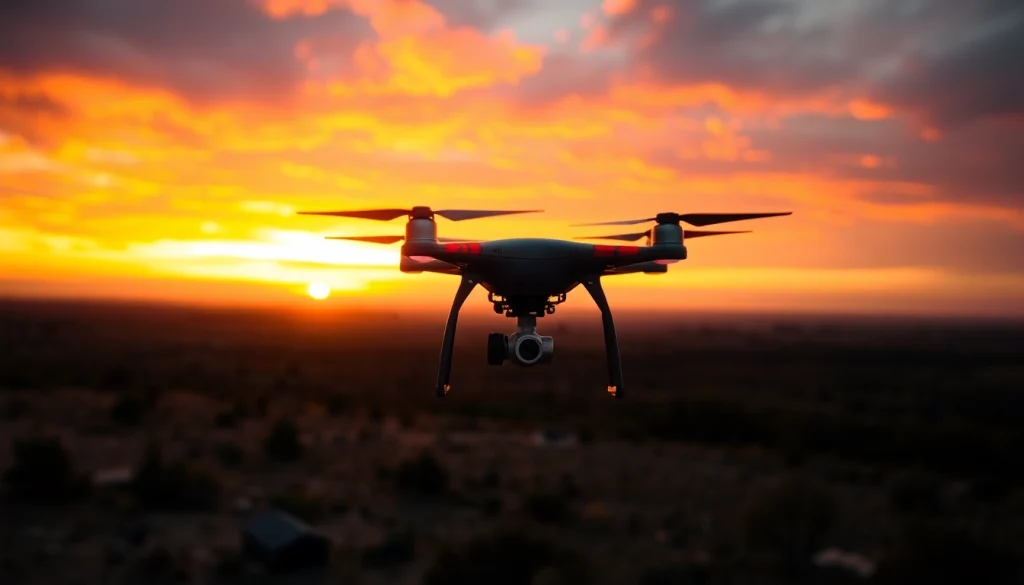Master Drone Photography Editing Techniques for Stunning Aerial Imagery

Introduction to Drone Photography Editing
Drone photography has transformed the way we capture and experience the world from above. The breathtaking perspectives and unique angles offered by aerial imagery can create stunning visual narratives. However, the raw images produced by drones often require careful post-processing to achieve their full potential. This is where drone photography editing comes into play. Editing not only enhances the artistic quality of photographs but also corrects technical flaws, making it an essential skill for any drone enthusiast.
Understanding the Basics of Drone Photography
Before diving into editing techniques, it’s crucial to grasp the fundamental aspects of drone photography. Understanding how different lighting conditions, angles, and altitudes affect the quality of images is key. Capturing images in RAW format is recommended, as this file type retains more information than JPEG, providing greater flexibility during editing.
Additionally, it’s important to consider the composition when flying a drone. Techniques such as the rule of thirds, leading lines, and symmetry can dramatically enhance the visual impact of the final image. A well-composed photograph can reduce the amount of editing required later and enhance the viewer’s experience.
Key Software for Drone Photography Editing
There are numerous software options available for editing drone photography, each offering distinct functions suited for various levels of expertise. Popular choices include:
- Adobe Lightroom: Known for its simplicity and powerful capabilities, it’s ideal for those who wish to perform color corrections and adjustments quickly.
- Adobe Photoshop: This is the go-to for more advanced manipulation, allowing for detailed work on individual layers, masks, and more complex edits.
- Capture One: Favored by professional photographers, this software offers exceptional color grading tools and is optimized for RAW images.
- Affinity Photo: A cost-effective alternative with many features similar to Photoshop, ideal for newcomers looking to explore advanced editing without a significant financial investment.
Importance of Editing in Drone Photography
Editingsignificantly contributes to the storytelling aspect of drones in photography. It enables photographers to convey emotions, highlight specific subjects, and generate a particular atmosphere that draws viewers in. The importance of editing is further underscored by the competitive nature of the photography market today—where striking visuals can make or break a project. Proper editing can turn an ordinary photograph into an extraordinary work of art.
Essential Techniques in Drone Photography Editing
Color Correction and Enhancement
One of the first steps in editing drone photographs is color correction to ensure that the images reflect the natural beauty of the scene. This can include adjusting the white balance, saturation, and contrast to achieve a more vivid and appealing photograph.
Tools available in software like Lightroom allow users to adjust the HSL (Hue, Saturation, Luminance) settings to fine-tune specific colors within the image. Altering these properties can enhance the sky’s blues, make greens in nature pop, or adjust skin tones in portraiture. Color grading can significantly shift the overall mood of an image, making it vital to understand the emotional message conveyed by certain hues.
Effective Cropping and Composition
Editing also provides an opportunity to crop images for better composition. Even if the original image was well-composed, minor adjustments can elevate the focus on the main subject. When cropping, consider the key principles of composition such as the rule of thirds, leading lines, and focal points.
The aspect ratio is also worthwhile to consider; most social media platforms favor certain dimensions. Tailoring your output to fit these specs ensures that your images appear professional and captivating when shared online.
Utilizing Filters for Unique Effects
Filters can be a fun way to manipulate the mood of an image quickly. From subtle adjustments that enhance clarity to dramatic filters that transform a scene into something extraordinary, the options are vast. However, it’s essential to use filters judiciously; over-filtering can make a photograph appear artificial.
Experimenting with preset filters can provide inspiration and facilitate quicker workflows. Many editing software programs offer learning resources or community-generated filters that can help streamline your editing process while still achieving unique results.
Advanced Editing Tips for Stunning Results
Leveraging Layers and Masks
For users experienced in programs like Photoshop, utilizing layers and masks can yield stunning results. Layers allow adjustments to be made without affecting the original image, allowing for more experimentation without the risk of ruining your work.
Masking can help selectively apply changes to certain areas of an image, allowing for targeted edits on skies, foregrounds, or specific subjects. For example, darkening the sky while keeping the landscape bright can create an engaging contrast that draws the viewer’s eye.
Creating Textures and Depth in Images
Adding texture can dramatically improve the visual interest of drone photography. This can be created through techniques such as dodging and burning, which manipulate depth by selectively brightening or darkening certain areas. Textures can also be applied via overlay layers, creating a tactile quality that enhances realism.
Additionally, employing focus stacking techniques can create images with incredible depth of field, especially when shooting landscapes or architectural subjects. This involves taking multiple images at varying focal points and then merging them during editing to maintain detail throughout the image.
Integrating HDR Techniques in Drone Photography Editing
High Dynamic Range (HDR) imaging is another powerful technique in drone photography editing. This method involves taking multiple exposures of the same scene at different exposure levels and then blending them in post-production. This technique allows for the preservation of highlight and shadow details, providing a more balanced and breathtaking final image.
HDR can be especially beneficial in challenging lighting conditions, like dawn or dusk, where a single exposure may struggle to capture the full range of light present.
Common Challenges in Drone Photography Editing
Overcoming Low Light Conditions
A significant challenge for drone photographers is working with low light conditions, which can lead to noisy images. Techniques to tackle this include adjusting your exposure settings when taking pictures, enabling longer shutter speeds while stabilizing the drone to reduce camera shake.
In post-processing, using noise reduction tools effectively can help to smooth out graininess without losing detail. Often, reducing the sharpness and clarity settings in noisy areas can lead to a pleasing result while preserving the essential details in well-lit sections.
Fixing Distortions and Artifacts
Distortions can occur due to the lens on the drone, especially wide-angle lenses that can create barrel distortion. Most editing software provides correction tools that can help reduce these unwanted effects. Understanding the lens used with your drone can also help in preemptively avoiding distortion during capture.
Artifacts can also surface during editing, often a result of over-processing. Keeping an eye on the histogram and ensuring proper tonal ranges within the image helps in diagnosis and eventual solutions to these issues.
Maintaining Detail in Large Aerial Photos
Aerial images can often be quite large, and maintaining detail while processing these files may prove difficult. Starting with the highest possible resolution and avoiding excessive cropping can help preserve this detail. Utilizing sharpening tools selectively can also ensure that only the relevant areas receive enhancement without a loss in overall quality.
Additionally, employing the use of proxy editing files can allow smoother workflows without sacrificing the quality of edits performed on the final rendered images.
Measuring Success in Drone Photography Editing
Evaluating Your Edited Images
Once you’ve completed your editing, it’s vital to evaluate the final product critically. Look for aspects such as sharpness, color accuracy, and overall composition. Seeking feedback from other photographers can provide fresh perspectives that highlight strengths and weaknesses.
Establishing a set of criteria for self-evaluation can streamline the process, providing a clear framework under which to assess your work.
Feedback and Critique from Peers
Engaging with the photography community can foster growth and skill enhancement. Participating in forums, workshops, or online critiques are great ways to receive constructive criticism. Being open to feedback can lead to a better understanding of editing practices and spark inspiration for future projects.
It is vital to differentiate between subjective opinions and objective critiques; learning to filter feedback will solidify your editing style while expanding your creative toolbox.
Tracking Changes in Viewer Engagement Post Editing
Analyzing how viewers engage with your images post-editing is crucial for growth. Utilizing analytics tools on platforms where your images are shared can provide insights into engagement metrics. Being aware of what aspects attract more attention can lead to strategic adjustments in your future editing processes.
Moreover, monitoring social media trends can help evolve editing techniques over time, ensuring your work remains relevant and impactful in a rapidly changing visual landscape.







